With mobile phones occupying an average of 3 hours of our day,1 it’s no surprise that users have a very personal relationship with their smartphones. Here are some interesting stats:
- 65.6% of US adults check their phones up to 160 times a day2
- US users receive an average of 49.9 push notifications every day3
- Nearly 30% of users delete an app due to excessive ads or notifications
- The average push notification CTR is 2.25% across all verticals
- Smartphones users tap into an average of 9 to 10 apps on a daily basis4
With so many app notifications vying for users’ time, how do you get your app to rise above the noise? How can you ensure your mobile messaging is not only capturing their attention but also getting them to open and use your app regularly?
From reminders and alerts to discounts and promotions, the most effective mobile campaigns deliver the right information exactly when users want it — sometimes even before they know they want it. Consistent and relevant messaging not only enhances the customer experience both in and out of your app but also results in lifelong loyalty from your users.
What are Mobile Marketing Campaigns?
Mobile marketing campaigns refer to promotional activities and strategies designed specifically for reaching and engaging target audiences through mobile devices, such as smartphones and tablets. With the widespread use of mobile devices and the increasing amount of time people spend on their phones, mobile marketing has become a crucial aspect of overall marketing strategies for businesses and organizations.
Why Focus on Mobile Campaigns in your Marketing?
In the contemporary digital landscape, mobile devices such as smartphones and smartwatches have become the primary gateway to the internet worldwide, surpassing desktop usage. This shift underscores the critical importance of aligning marketing efforts with mobile platforms. The majority of global markets are actively consuming ad campaigns and content marketing on mobile channels, making it imperative for businesses to establish a strong presence where their audience is most engaged. Given that 90% of organizations have embraced content marketing strategies, optimizing content and ad campaigns for mobile platforms is paramount for effectively reaching and engaging the target audience.
Types of Mobile Marketing Campaigns Examples
Mobile marketing campaigns, essential in today’s mobile-centric world, employ diverse strategies to engage users. From personalized messages to interactive experiences, these campaigns aim to capture attention and foster brand loyalty. In this exploration, we’ll highlight examples, such as SMS marketing, in-app advertising, and location-based initiatives, showcasing the versatility of mobile-driven strategies. Businesses navigate this dynamic landscape to forge meaningful connections with their target audiences.
1. Awareness
While retention is the most important metric for mobile growth, building brand awareness drives interest and acquisition. If users don’t know about your app, how do you expect them to engage with it?
Awareness campaigns help spread word about the value of your app. Some companies do this successfully through mobile ads on social media channels, others find creative ways to show their value by providing an immediate solution to a common problem.
For example, Ogilvy & Mather Paris partnered with the Scrabble app to give Parisians a free wifi connection in locations where you typically can’t access wifi. However, in order to access it, users had to demonstrate their spelling abilities. The higher the score, the more free wifi time. They even leveraged social media and encouraged users to post words to Facebook, expanding their reach and brand awareness.
The results? Over 100,000 minutes of free wifi, 6,000 words unscrambled, and countless downloads of the Scrabble app.
2. Transactional
Whether you’re confirming a transaction was successful or alerting a user of shipping updates, transactional campaigns are highly useful in boosting engagement — and there are stats to prove it. Transactional campaigns have 8x the open and engagement rate of traditional marketing emails.5
Think about it — the hard part is done. You’ve proven your value enough to get the user to convert, now you want to make the transaction as seamless and transparent as possible so they can’t wait to do it all over again.
However, sending thousands of transactional campaigns that are unique to every user can quickly become overwhelming and ineffective. Trigger campaigns are a great way to automate engagement in response to a user’s specific action (or inaction).
So when a user orders a photo from the Walgreens app, they automatically receive a helpful email confirming their order and providing a timeframe of when their order will be ready for pick up. 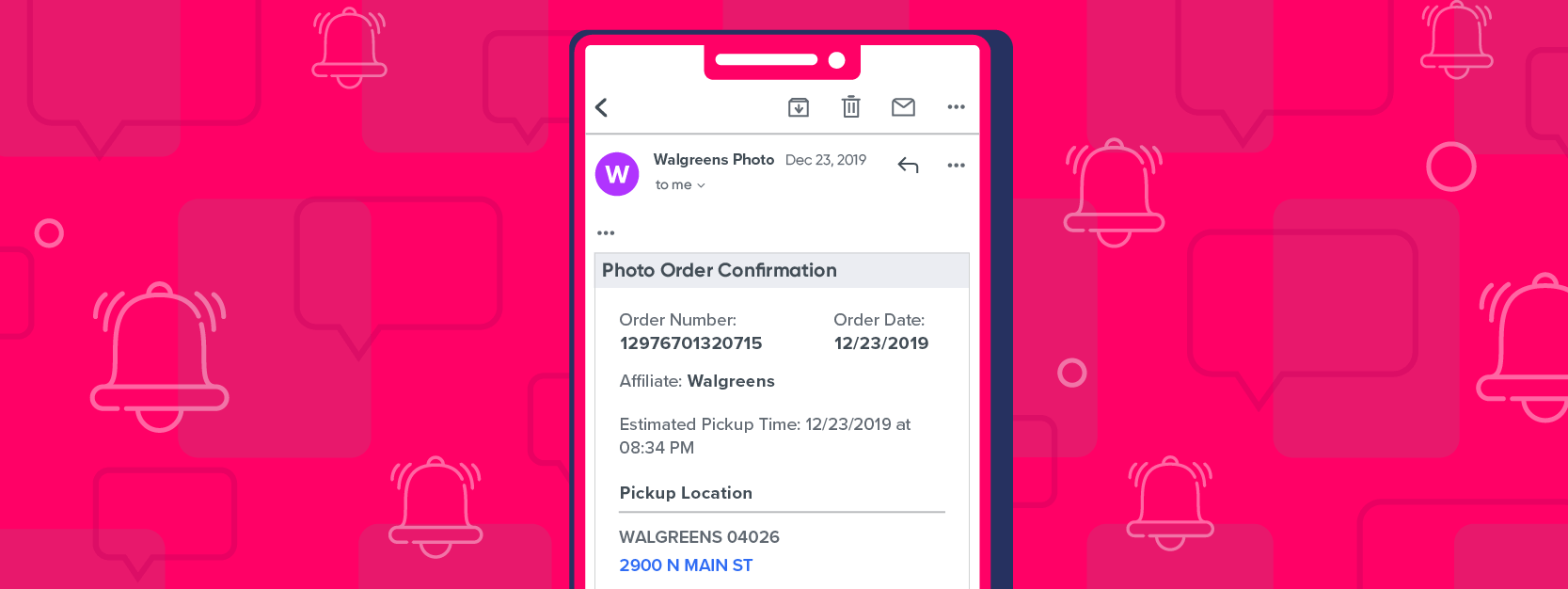
3. Onboarding
A whopping 23% of apps are only used once. Getting users started on the right foot is key to driving long-term retention — and can lead to a 500% increase in CLV.
Effective onboarding campaigns help new users learn the ropes. Depending on what vertical you’re in, you might want to showcase a tour of your app, highlight the key features, or list the benefits. Whatever you choose to feature in your onboarding campaign, make sure you’re delivering value as soon as possible.
The best way to deliver value on your app? Tell your users exactly what to do first.
Headspace sends a delightful email out to each new user, welcoming them to the app and giving them clear instructions on how to take advantage of their platform. They provide a clear call to action where the new user can immediately begin their first session and offer a roadmap so the user knows exactly what to expect once they complete the basics.
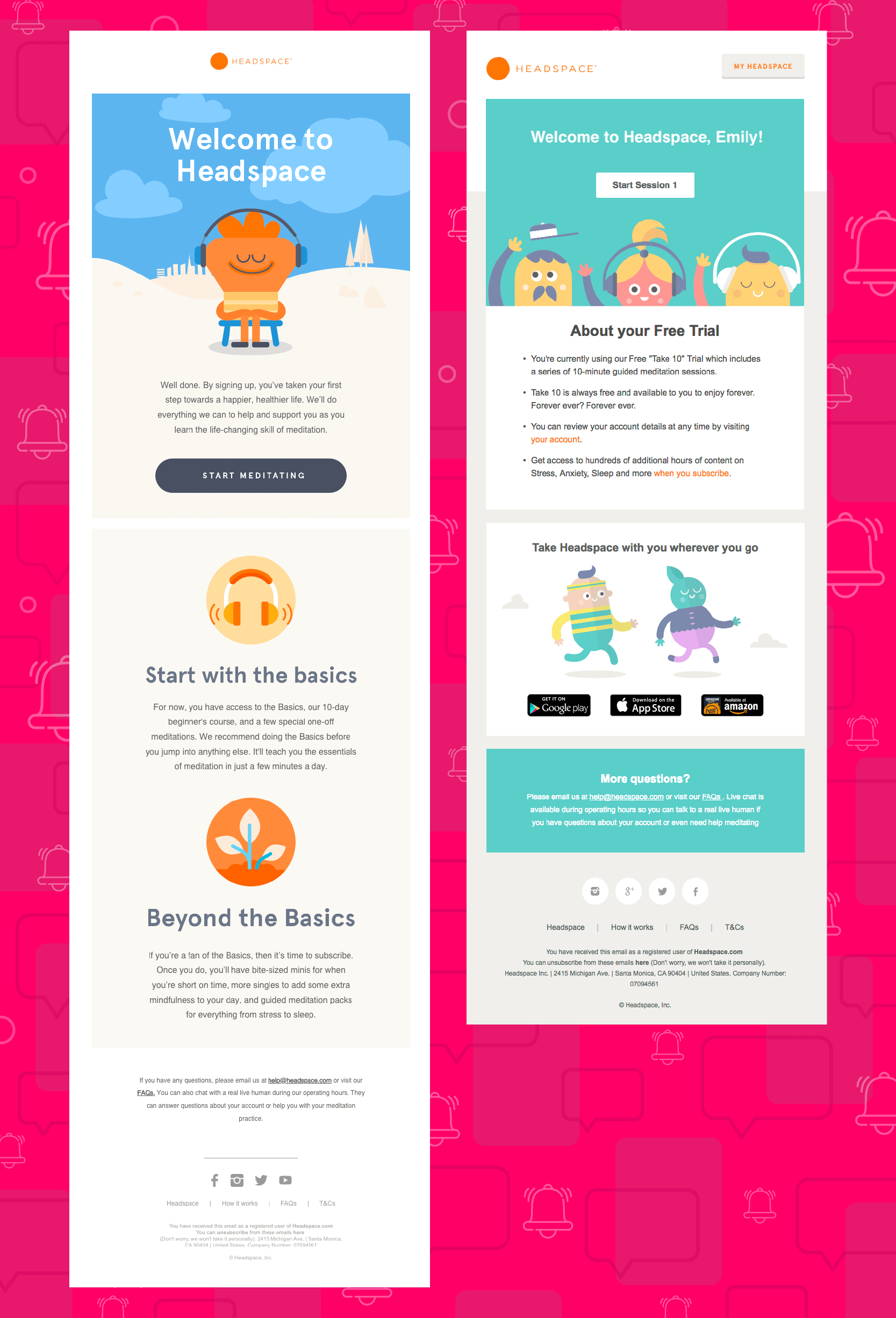
4. Opt-In
The last thing your users want to do is opt into more emails, more push notifications, and more text messages. They’re already drowning in notifications as is, all while trying to reach the fabled “inbox zero.”
If you must ask your users to opt-in to something such as emails or SMS messages, share what’s in it for them. What value will they be getting from opting in?
More importantly, the timing of your opt-in requests is just as critical as the content. Instead of just asking first-time users if they’re ready to receive push notifications, use priming campaigns as a way to ease them into why they’d want to opt into your alerts. Creating a process that thoughtfully grooms your users for that opt-in request increases the likelihood of them agreeing to it.
National Wholesale Liquidators created a mobile SMS campaign as a lead gen tool for their email and text database. If users opted into their SMS campaign, they would receive a coupon for $5 to $25 off.
The campaign resulted in 50,000 new emails and found that participants spent 80% more than their typical customer.6
5. Promotional
Probably the most well-known type of campaign across consumers, promotional campaigns can be extremely influential when it comes to engagement… and disengagement. Too few promotions and your customers aren’t motivated to purchase. Too many, and your “special discounts” don’t seem that special anymore.
The key here is to find a healthy balance based on your users’ behaviors and interests. Analyzing user data and advanced segmentation helps you understand your users on a psychographic level — allowing you to target users with promotions they actually care about.
Geofencing is an excellent way to target users for a geographic-based promotion. UK Pizza Hut used geofencing and SMS marketing to target users within a specific area for a deal on pizza. They set up geo-fence locations within a half-mile radius of each Pizza Hut location. Customers who signed up for SMS messaging received an SMS promotion on their phone if they were within a half-mile of a Pizza Hut location.
Pizza Hut experienced 142% greater efficiency in increasing incremental sales than other channels. Their SMS campaign was 4.4X more effective than TV ads and 2.6X more effective than online ads.7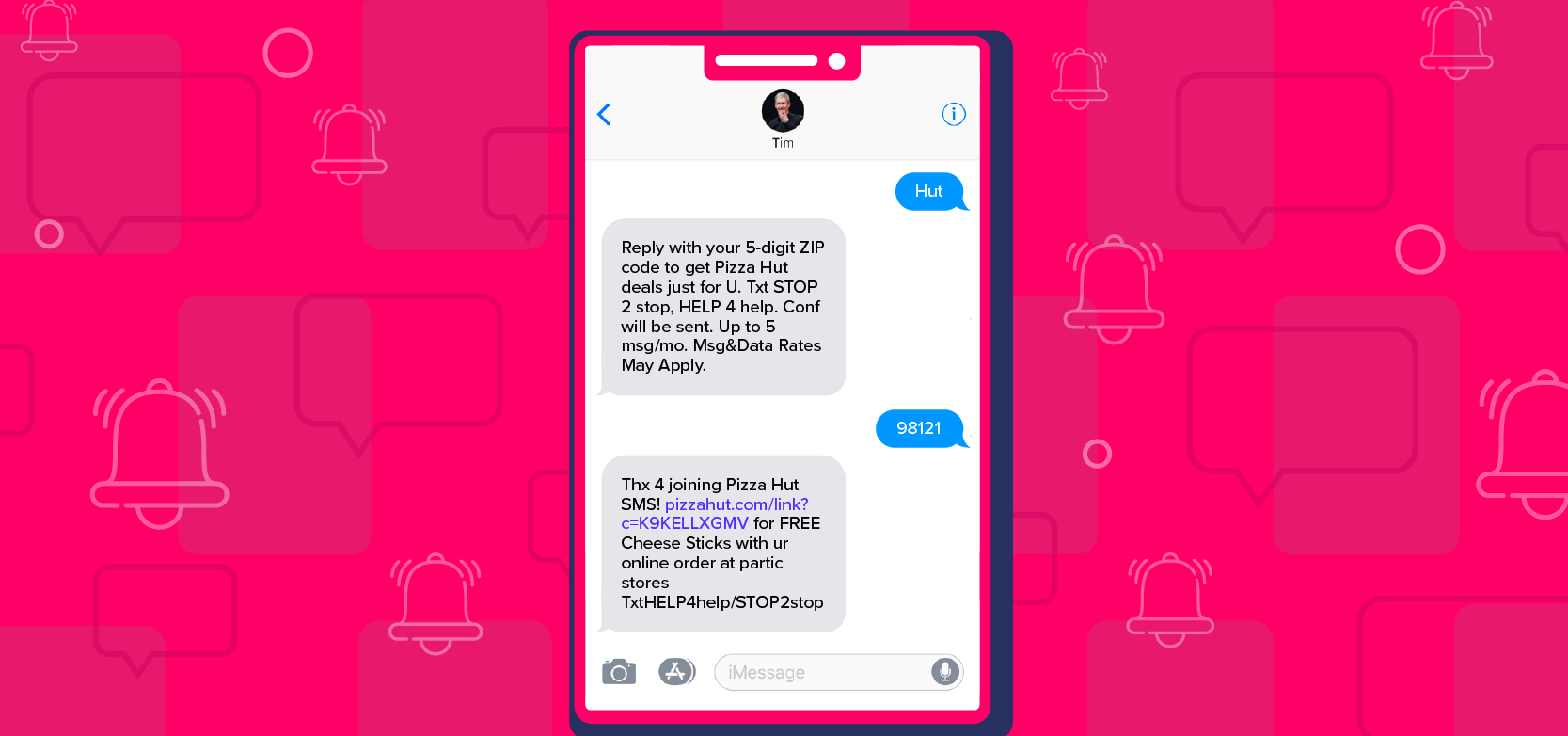
6. General updates
Once they’ve opted in, use this opportunity to keep them informed about changes and updates to your app.
Depending on what industry you’re in, this could be a variety of content. For fitness apps, it might be a new workout. For real estate apps, this could mean a new house was put on the market or has a pending offer. This could even be a new feature you’ve added to your app! Sky’s the limit on what you can update your users on, just make sure it’s content worthy of a campaign — or else you could be facing churn.
Many apps use dynamic content to boost engagement on mobile campaigns. Dynamic content incorporates up-to-date information in campaigns that are specifically relevant to your user — based on their location, subscription, intent, etc. For example, a weather app would alert a user on the conditions in their current location.
Songkick does this by notifying users when their favorite artists announce they’re playing a concert nearby. 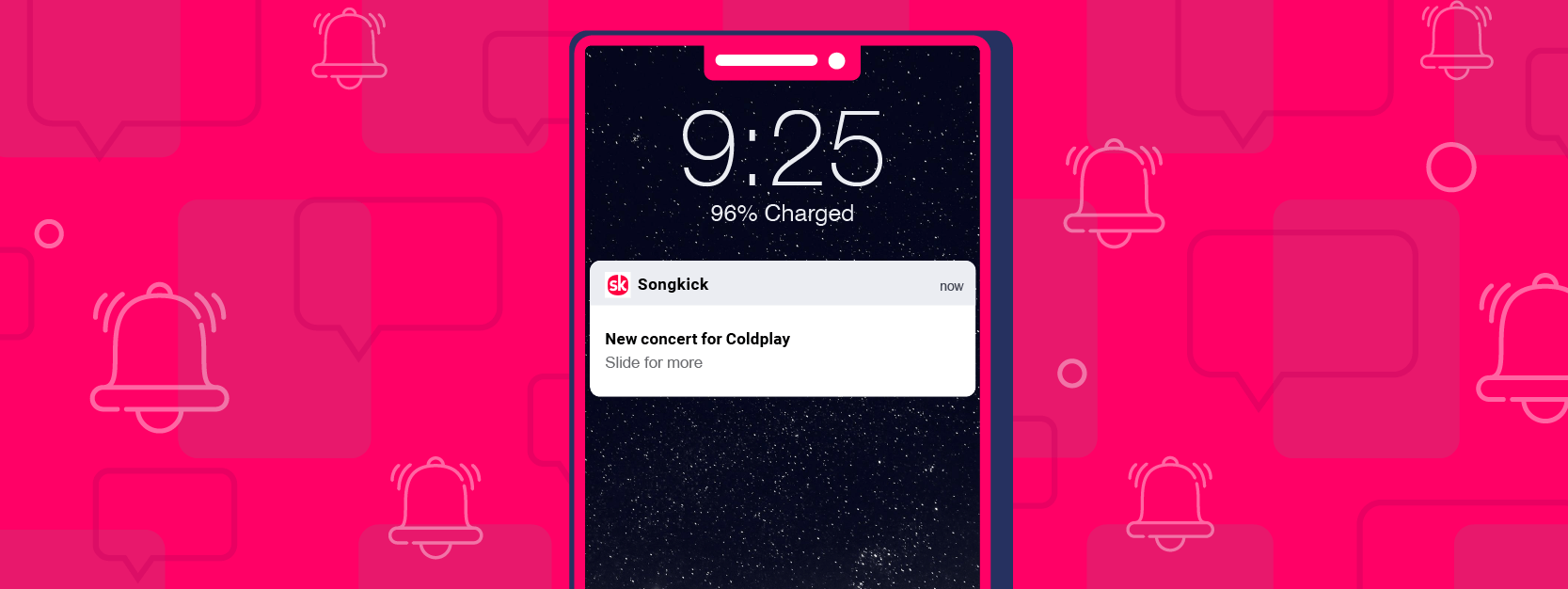
7. Feedback
One of the most valuable insights you can get doesn’t come from data analytics, it comes from your customers. Whether you just launched or are an app veteran, your customers appreciate the inquiry, and you’ll appreciate the insights.
If it’s just a simple question like asking users to rank your app, a push notification is a great way to get users to provide feedback while they have your app in their hand and top of mind. Net promoter scores (NPS) are a quick and easy way for your users to rank how likely they are to recommend your app.
If you’re looking for more in-depth feedback, deploying a feedback survey might be a good idea. Just make sure your users are incentivized to complete it.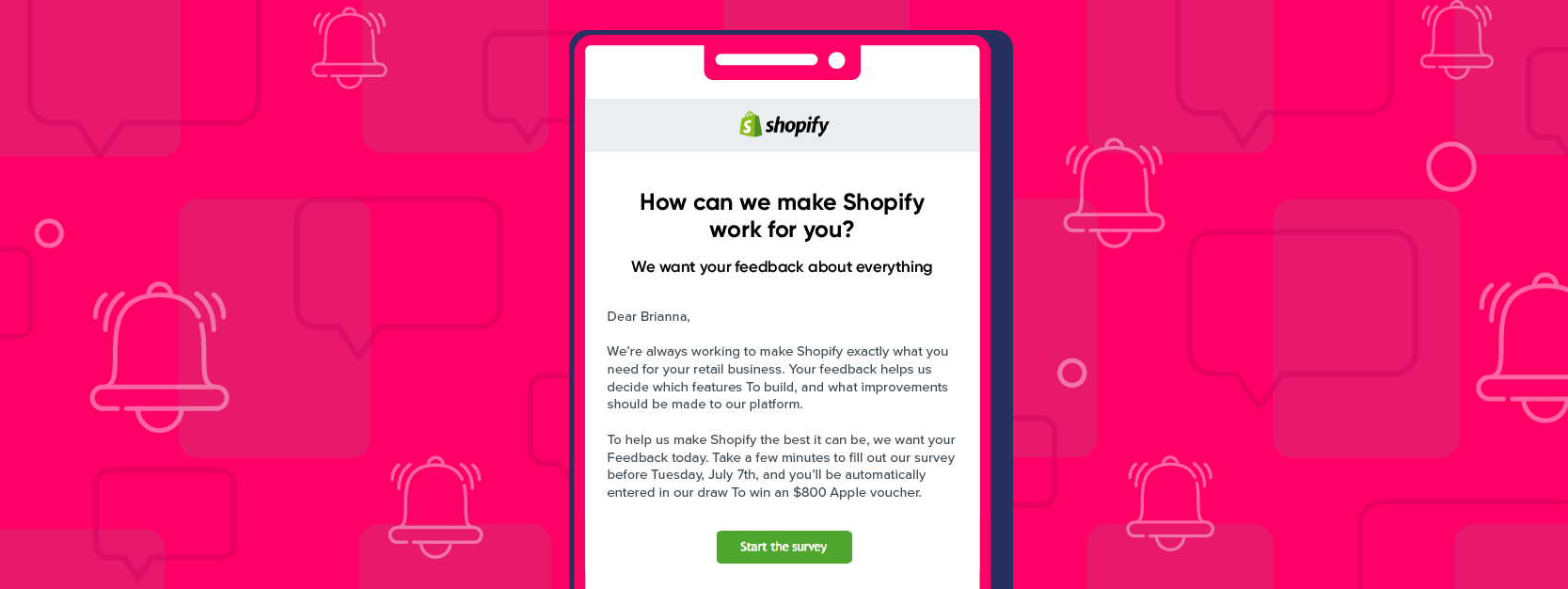
8. Referral
Studies show 83% of consumers are willing to refer a brand after a positive experience — yet only 29% actually do.8 That’s because many apps don’t have the proper tools in place to implement an effective referral program.
But how do you know when a user has had a positive experience? You can use AI tools to predict those who are most likely your loyalists. RFM Analysis helps you discover them, so you can incentivize them to refer your app. Because who better to evangelize your app than the users who already love it? 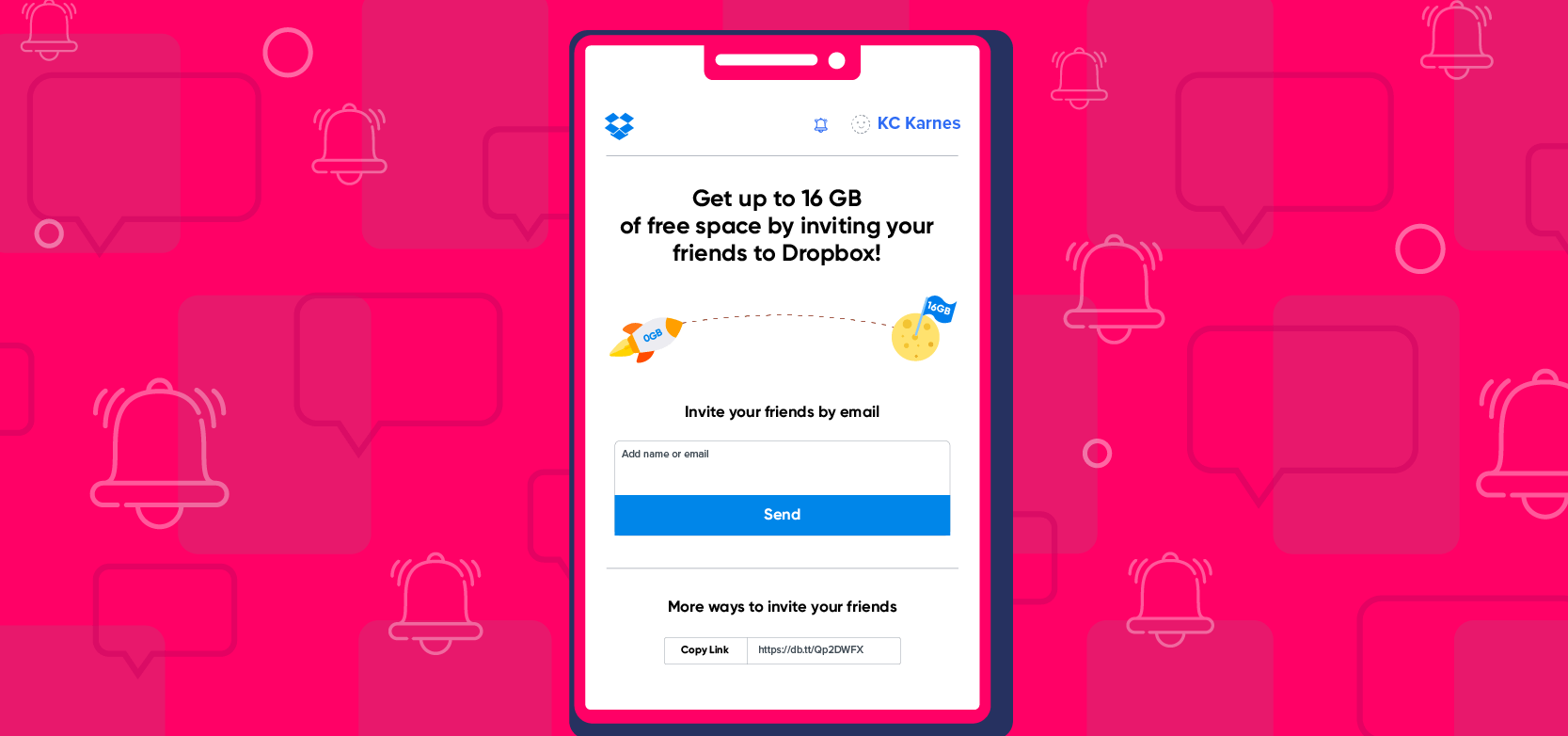
9. Upsell
So you found your free users are using your app every day — great! Now it’s time to monetize.
Upsell campaigns are an effective way to educate your loyal users on their subscription model options since they’re already showing so much interest in your app.
However, make sure you’re only targeting users who have already experienced the value of your app. If you’re bombarding new users with upsell requests, you’re sending potential customers out the door.
Spotify positions their upsell campaigns as a moment of discovery for freemium users. Instead of waiting for users to hunt for a pricing page or upselling opportunities (because how often does that happen?), Spotify waits for users to show intent by clicking on a Premium feature — increasing the likelihood of conversion. And it works, Spotify boasts a whopping 26% free-to-paid conversion rate.9
10. Win-back
Acquiring a new customer can be up to 25x more expensive than retaining an existing customer.10 That’s why executing effective win-back campaigns can save apps from facing costly acquisition campaigns in a continuous cycle of replacing lost users.
But you don’t want to blindly start trying to woo back all your churned users with the same messaging. Knowing why they left in the first place helps you personalize your request for them to come back.
Funnels allow you to see how users are navigating your app — revealing all the common user paths and friction points. This tool helps mobile marketers understand what users did right before they churned, so they can tailor their messaging around where the user left off.
Dollar Shave Club sent a personal and relevant win-back email to users who used their platform once but didn’t stay, while also highlighting social proof of brand loyalty and trust. 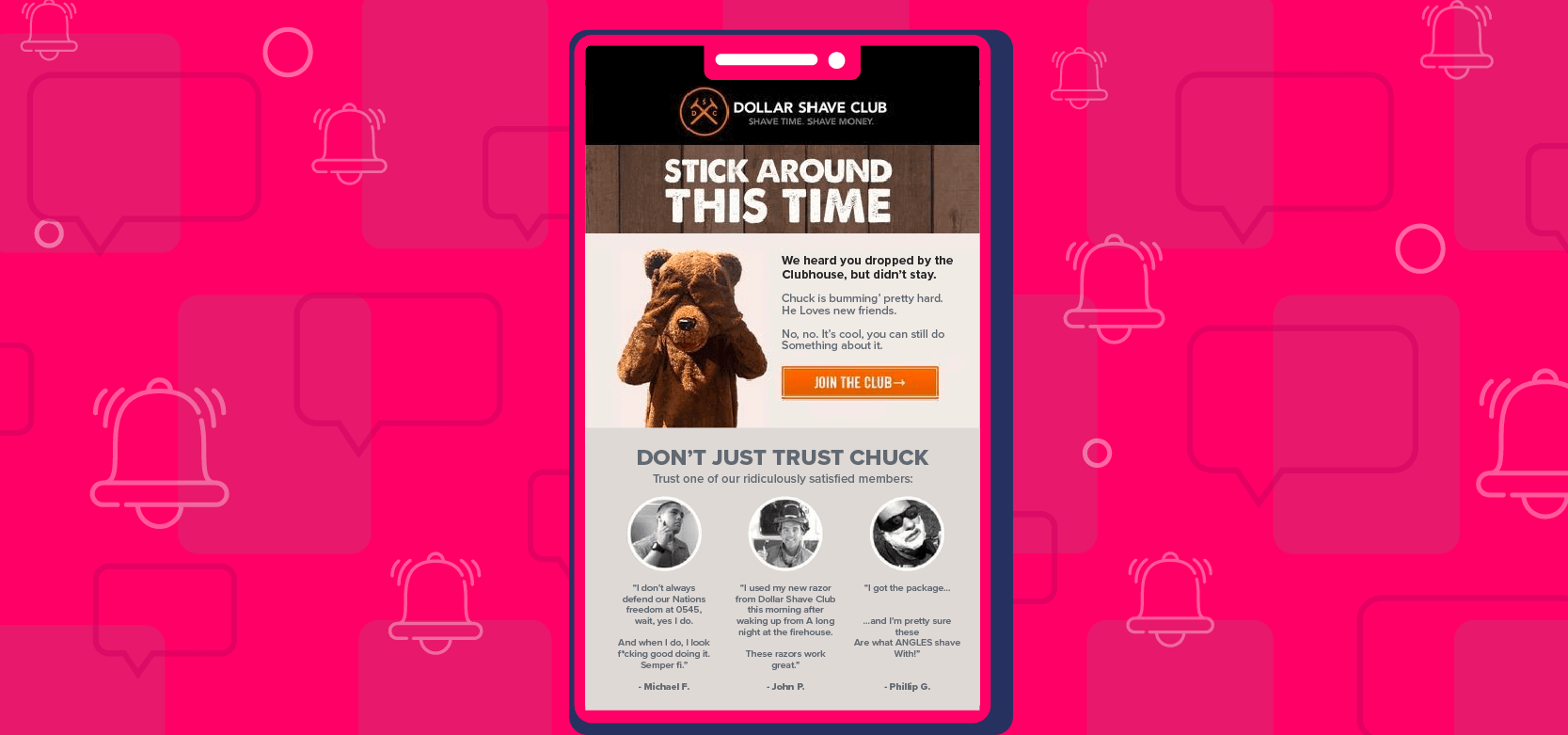
Download our Win-Back Campaigns ebook for best practices around winning back your lost users.
Mastering Mobile Campaigns
No single type of campaign is better than another. In fact, using a single style of mobile marketing campaign can grow stale and become annoying to your users.
The truth is, you should be using a combination of all these campaigns to establish value quickly, encourage continuous engagement, and boost customer lifetime value.
With the right tools, you know what campaigns are working and can fine-tune your marketing strategy to optimize retention and growth. CleverTap offers enhanced customer segmentation and analytics tools so you can tailor each campaign for optimal engagement and a lifetime of loyalty from your users.

See how today’s top brands use CleverTap to drive long-term growth and retention
Shivkumar M 
Head Product Launches, Adoption, & Evangelism.Expert in cross channel marketing strategies & platforms.
Free Customer Engagement Guides
Join our newsletter for actionable tips and proven strategies to grow your business and engage your customers.














































